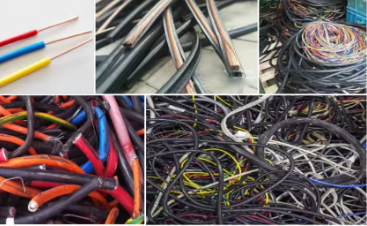

ធ្នូ . 21, 2024 08:24 Back to list
Understanding Eddy Current Separators A Diagrammatic Approach
Eddy current separators are critical devices in the recycling and waste management industries, employed primarily for the separation of non-ferrous metals from other materials. The operational principle underlying these separators is based on the generation of eddy currents in conductive materials when exposed to a changing magnetic field. To better understand how these separators function, it can be helpful to refer to a detailed diagram of the eddy current separator system.
The Working Principle
At the heart of the eddy current separator is a rotating magnetic drum. The diagram typically shows a cylindrical rotor equipped with alternating magnetic poles. As the rotor spins, it creates a rapidly changing magnetic field. This field is crucial for the generation of eddy currents within conductive materials that come into its vicinity.
When a non-ferrous metal (such as aluminum, copper, or brass) passes through the magnetic field generated by the rotating drum, the changing magnetic lines induce eddy currents in the metal. These eddy currents create their own magnetic field, which interacts with the original field produced by the rotor. Due to the Lorentz force, a repulsive force acts on the conductive material, causing it to be ejected from the main material stream.
Conversely, non-metallic materials and ferrous metals lack the capacity to conduct eddy currents effectively. Consequently, they do not experience significant repulsion and continue along with the main material flow, falling into a separate chute.
Components of the Eddy Current Separator
A comprehensive diagram of an eddy current separator typically includes several key components
1. Feed Conveyor This is where mixed materials are initially fed into the separator. The feed conveyor directs the material towards the rotating drum at a controlled speed to optimize separation efficiency.

3. Material Flow A well-designed diagram will show the direction of material flow, highlighting how different materials interact with the magnetic field. Non-ferrous metals will diverge from the primary stream, while other materials continue along their original path.
4. Discharge Chutes After passing through the separator, non-ferrous metals are collected in a designated chute, separate from the remaining materials, which continue to the next stage of processing.
5. Control System Modern eddy current separators may also include a control unit that regulates speed and can be adjusted based on the type of materials being processed, illustrated in the diagram as control circuitry linked to various components.
Applications of Eddy Current Separators
Eddy current separators are versatile and employed in various applications, making separation more efficient and environmentally friendly. Common uses include
- Recycling Facilities Separating aluminum cans, copper wires, and other non-ferrous scrap from mixed waste streams. - Mining and Mineral Processing Extracting valuable metals from ores. - Electronics Recycling Recovering precious metals from electronic waste.
Conclusion
The eddy current separator diagram encompasses a wealth of information about the operational mechanics and components involved in this innovative technology. By exploiting the principles of electromagnetism and material properties, eddy current separators play an essential role in effective recycling processes, enhancing resource recovery and contributing to sustainable waste management practices. Understanding the intricacies of this technology through diagrams aids in grasping its importance and functionality, solidifying its place as a pivotal tool in modern industry.
Latest news
Industrial Double Shaft Shredder Machine: Powerful & Efficient Shredding
NewsAug.29,2025
High-Efficiency Copper Wire Granulators | Best Price for Sale
NewsAug.28,2025
Eddy Separator for Non-Ferrous Metals
NewsAug.22,2025
E Waste Bin for Collected Spray Cans: Sustainable Disposal Solutions
NewsAug.22,2025
Dual Shaft Shredder with Adjustable Blade Gaps
NewsAug.22,2025
Hammer Crusher Machine With Secondary Crushing
NewsAug.22,2025